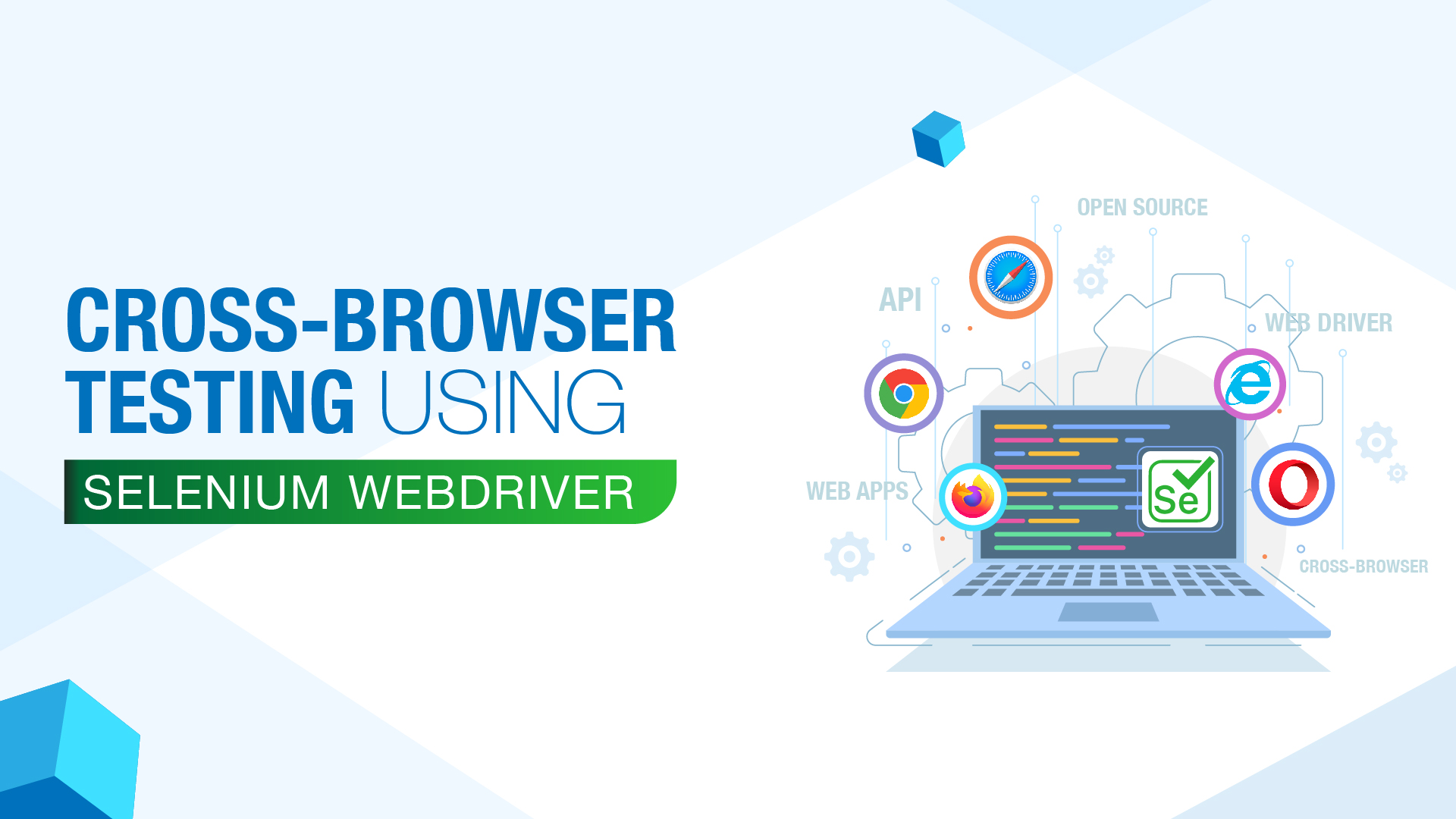Start automating your tests 10X Faster in Simple English with Testsigma
Try for freeWhen you build a web application, it must work well across various OS platforms and browsers. In simple terms, verifying the web application’s performance and compatibility is necessary. In recent trends, automation testing is a top-notch framework that automates the effort of manual testing. Selenium is one such tool that fits well in this scenario. In this blog post, let’s understand how to perform cross browser testing using Selenium WebDriver.
Table Of Contents
- 1 Overview of Cross Browser Testing using Selenium
- 2 Cross Browser Testing using Selenium
- 3 How to Perform Cross Browser Testing using Selenium?
- 4 Best Practices to do Cross Browser Testing in Selenium
- 5 Testsigma to the Rescue
- 6 Cross Browser Testing in Selenium – How Testsigma can help?
- 7 Conclusion
- 8 Frequently Asked Questions
Overview of Cross Browser Testing using Selenium
It’s not fair to ask users to access your application with a specific browser. To reach out to the maximum number of users, you need to cater to all the devices and platforms they use. Since there are various web browsers in the market, the choice of usage should be left to the user. Different users use different browsers based on their comfort. It’s the job of the test engineer to ensure that the application works well on all the widely used browsers. This urges the need for testing the application code on different platforms. This is where cross browser testing comes into the picture, the type of testing which verifies that a website works accurately in all browsers.
The main goal is to verify that the website you’re developing runs perfectly on all targeted browsers and operating systems. Testers can either run manual tests or use automated tools like Selenium WebDriver. It helps save you time, as you need not reinstall your browsers multiple times.
Cross Browser Testing using Selenium
As mentioned earlier, Selenium is the most popular automated testing tool for various functions. Browser testing is one of the many features supported by Selenium.
- Selenium WebDriver enables you to automate test cases on Internet Explorer, Firefox, Chrome, and Safari browsers.
- You can integrate the TestNG framework with Selenium WebDriver to run your test cases on different browsers.
- You can analyze performance for cross-browser compatibility.
Read on Selenium Based Automation Testing to gain deeper insights into the various components of Selenium.
Next, let’s see how to perform cross browser testing using Selenium.
How to Perform Cross Browser Testing using Selenium?
Let’s write a simple code to understand how it works.
Requirements:
- Java Installation
- Integrated Development Environment (IDE) installed. In this case, let’s use Eclipse IDE
- Selenium Server Configuration
- TestNG integration
- Browser Drivers for Chrome, Firefox, Edge, etc.
Flow:
In the below program, let’s log in to the Testsigma website.
The task here is to check for cross-browser compatibility on 3 different browsers. They are Google Chrome, Mozilla Firefox, and Microsoft Edge. To do this, let’s set the system properties for all the 3 browsers as shown below. Finally, using locators allows you to perform actions on the website.
Code:
package test;
import java.util.concurrent.TimeUnit;
import org.openqa.selenium.By;
import org.openqa.selenium.WebDriver;
import org.openqa.selenium.WebElement;
import org.openqa.selenium.chrome.ChromeDriver;
import org.openqa.selenium.edge.EdgeDriver;
import org.openqa.selenium.firefox.FirefoxDriver;
import org.testng.annotations.BeforeTest;
import org.testng.annotations.Parameters;
import org.testng.annotations.Test;public class TestScript {
WebDriver driver;
@BeforeTest
@Parameters("browser")
public void create(String browser) throws Exception{
//Checking for 'firefox' parameters
if(browser.equalsIgnoreCase("firefox")){
//creating firefox instance
System.setProperty("Add the path to the firefox/gecko driver");
driver = new FirefoxDriver();
}
//Checking for 'chrome' parameters
else if(browser.equalsIgnoreCase("chrome")){
//Creating chrome instance
System.setProperty("Add the path to chrome driver");
driver = new ChromeDriver();
}
else if(browser.equalsIgnoreCase("Edge")){
//Creating edge instance
System.setProperty("Add the path to edge driver”);
driver = new EdgeDriver();
}
else{
//If the browser is not passed then throw the below exception
throw new Exception("Invalid browser");
}
driver.manage().timeouts().implicitlyWait(10, TimeUnit.SECONDS);
}
@Test
public void testParameterWithXML() throws InterruptedException{driver.get("https://www.testsigma.com");
WebElement Signin = driver.findElement(By.linkText("Login"));
//Hit login button
Signin.click();
Thread.sleep(4000);
WebElement uname = driver.findElement(By.id("loginUsername"));
//Fill user name
uname.sendKeys("your email id");
Thread.sleep(4000);
WebElement pwd = driver.findElement(By.name("password"));
//Fill password
pwd.sendKeys("your password");
Thread.sleep(6000);
WebElement = driver.findElement(By.linkText("SIGN IN));
//Hit search button
Next.click();
}@AfterTest
public void quit(){
driver.close();
}
}To execute the above test script, you need a TestNG XML file that contains the dependencies of the above class file. In this case, I have created an XML file to reference the above parameters.
<?xml version="1.0" encoding="UTF-8"?>
<!DOCTYPE suite SYSTEM "http://testng.org/testng-1.0.dtd">
<suite name="TestSuite" thread-count="2" parallel="tests" >
<test name="ChromeBrowser_Test">
<parameter name="browser" value="Chrome"/>
<classes>
<class name="test.TestScript">
</class>
</classes>
</test>
<test name="FirefoxBrowser_Test">
<parameter name="browser" value="Firefox" />
<classes>
<class name="test.TestScript">
</class>
</classes>
</test>
<test name="EdgeBrowser_Test">
<parameter name="browser" value="Edge" />
<classes>
<class name="test.TestScript">
</class>
</classes>
</test>
</suite>On executing this code as TestNG Test, browser drivers will instantiate the respective browsers and perform the login action on the Testsigma website.
This is how it works. Now let us understand how Testsigma eases the process of writing automated test code.
Best Practices to do Cross Browser Testing in Selenium
Here are some recommended best practices to follow when conducting cross-browser testing with Selenium:
- Be careful when selecting libraries and frameworks: The most recent CSS or JS frameworks might not be compatible with all browsers. This is important to remember while creating web apps because browsers have various rendering engines. Before using these libraries or frameworks, check browser recommendations to discover if they support them.
- Employ relevant JavaScript libraries and task runners: Because JavaScript is a crucial component of web app development, it is critical to employ the appropriate JavaScript resources that fulfill site needs and provide consistent browser compatibility.
- Identify and analyze your browser’s OS configuration: To do effective cross-browser testing with Selenium, you must know the required browser versions and operating systems. We recommend prioritizing combinations likely to be used by the largest segments of your audience.
- Optimized for Internet Explorer: Internet Explorer does not support advanced CSS styles and frameworks, which can distort design elements. To solve this problem, create a separate style sheet for IE and add some hacks to the doctype.
By following these best practices, testers can ensure that their web application behaves consistently across different browsers and operating systems.
Testsigma to the Rescue
Modern teams need automation testing to build and deploy bug free applications efficiently. Achieving test automation is complicated due to multiple framework setups, complex coding, etc.
Testsigma, a unified test automation platform on a cloud, simplifies and accelerates automation testing for web applications, mobile applications, and APIs. With Testsigma, test engineers, QA team, and business users can create, run and maintain automated tests easily. Simply put, anyone can test high-quality software with zero coding skills.
Using simple English commands powered by NLP (Natural Language Processing) engine, you can write tests in minutes. With NLP and Integrated API testing capabilities, teams can achieve in-sprint test automation with minimum effort. With Testsigma, maintaining different servers, operating systems, and mobile devices is no longer a problem.
It comes in two versions. One is free for a lifetime and meant for basic apps. The second one is the pro version which is free for 21 days and later charges a monthly fee.
Cross Browser Testing in Selenium – How Testsigma can help?
One can run tests in parallel on different operating systems, browsers, and browser versions. Testsigma offers more than 200 Android and iOS operating systems to run tests. This is how the platform replaces the effort of coding with simple English instructions and built-in functionality.
Since Testsigma offers over 200 operating systems and browsers, you can perform Automated cross-browser testing with just a few clicks. This reduces time consumption and increases performance.
Why wait? Sign up for a trial version of Testsigma and kickstart your Cross-Browser automation journey.
Conclusion
Cross browser testing lets you check for website compatibility. Selenium is one such automated testing tool, which serves this purpose. It’s up to the developers to deliver an end-user experience that’s consistently delightful across a multitude of browsers and devices.
Testsigma is a fully-managed test automation platform that includes all the core features of the open-source platform, without any infra-requirements. It offers enhanced security, extensive test lab, project and review management, powerful reporting capabilities, etc. Organizations can therefore consider using Testsigma to have a hassle-free and extensive testing process, especially as a cross browser testing tool.
Thus, this brings us to the end of our post on Cross Browser Testing using Selenium WebDriver. If you have any questions or suggestions, drop them in the comment section below.
Frequently Asked Questions
How do you test cross-browser compatibility using Selenium?
To test cross-browser compatibility with Selenium, you must write a test script using Selenium WebDriver, which supports multiple browsers. You can write test cases for each browser individually or use a testing framework such as TestNG to run tests on multiple browsers simultaneously. It’s crucial to ensure that your application’s functionality and user interface are consistent across all tested browsers and their versions. You can also use Selenium Grid to run your tests in parallel on multiple machines to speed up your tests. The best option would be going for an end-to-end automation platform like Testsigma.










